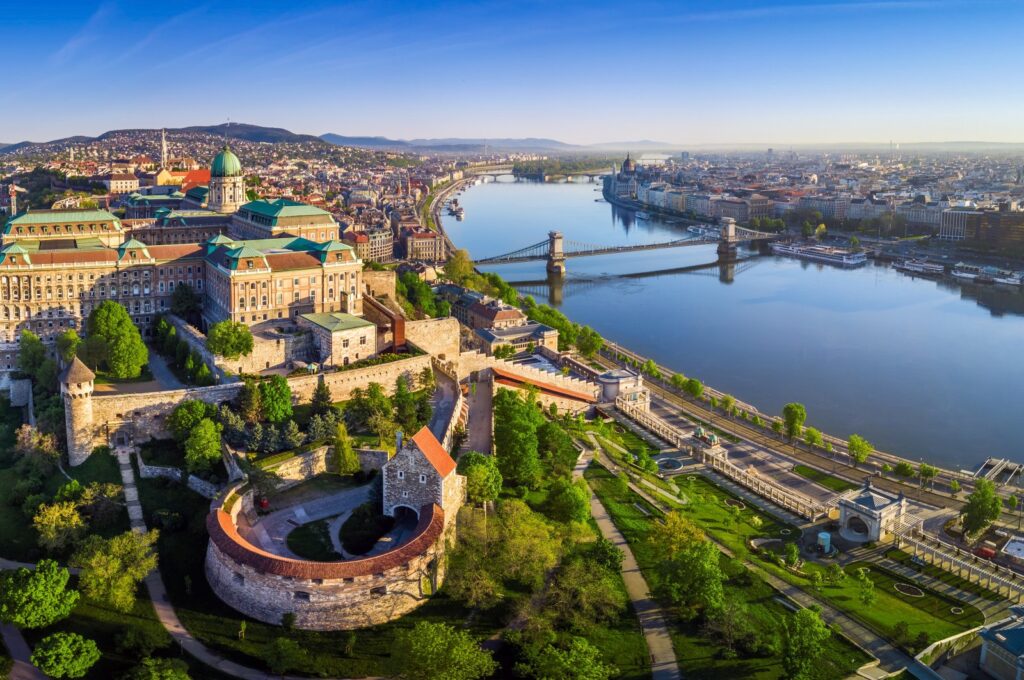
Michael Goldstein
The outlook for US spring and summer international travel seemed good. The travel industry, hit hard by the pandemic, had been steadily making gains over the past year. High vaccination rates, falling COVID infections, international quarantines dropping and the end of many mask mandates made it look like 2022 would be the year international travel returned.
Then the invasion of Ukraine happened. The war, creating death, destruction, and millions of refugees, has shocked the world.
While Kiev isn’t Paris and Moscow isn’t Madrid, the war in Europe has apparently put millions of potential travelers into a holding pattern. Higher fuel prices, fewer flights, higher air fares and a plunging stock market don’t help either.
A new study by MMGY Travel Intelligence looks at how the war in Ukraine is impacting U.S. traveler sentiment and behavior. MMGY found that the war in Ukraine is now twice as likely as COVID-19 to impact American’s vacation plans to Europe. The study interviewed hundreds of U.S. travelers planning to visit Europe, with the most popular destinations being Italy, France, the United Kingdom and Germany.
· 62% of U.S. travelers cited concerns about the war in Ukraine spreading to nearby countries as a factor impacting plans to travel to Europe, twice the number (31%) who cited COVID-19 health and safety concerns.
· 47% of travelers want to wait and see how the situation in Ukraine evolves before making plans to visit Europe this year.
· 50% of respondents said they were concerned about possible delays and cancellations of flights, trains, and cruises, as well as the potential for border closures.
MMGY Global CEO Clayton Reid said, “Much like at the height of the Omicron variant, we can’t predict how the situation may escalate; but travelers should feel confident in booking because of the flexible policies most airlines, hotels and OTAs introduced in response to COVID-19. It is also my belief that this hesitancy is short-lived and that prior to the peak travel season to Europe, sentiment will return to much more positive levels.”
Similarly, Tim Hentschel, Co-Founder & CEO, HotelPlanner, said, “Our hearts go out to everyone affected by the Russia/Ukraine conflict. Fortunately, we don’t anticipate the Russia/Ukraine conflict to impact the strong travel recovery we’re seeing across the U.S. and greater Europe. About 90% of Americans still plan to travel in the next six months.”
But will the violence and uncertainty drive Americans to another summer of domestic travel? The international picture appears cloudy, to say the least.
A war is raging in Western Europe, fuel prices are sky high, and travel to destinations like India, Korea and Japan from Europe and the U.S. has already been impacted by airspace closures. Russian carrier Aeroflot has been banned from the US, European Union, Canada, and other countries. As part of the chaos, United has temporarily suspended flights from San Francisco to New Delhi and from Mumbai to Newark because of the longer flights required to avoid Russian airspace.
Contested air space leads to disasters like Malaysian Airline MH17. In 2014, a civilian airliner was shot down over Ukraine by Russian separatists with a Russia-supplied missile. To avoid similar disasters (MH17 resulted in almost 300 deaths) Ukraine closed its airspace to foreign airliners. But airspace over much of Eastern Europe is considered at risk, including Russia, Belarus, Poland, Slovakia, Hungary, Romania and Moldova in addition to Ukraine.

Flights to and from Russia have been cancelled, obviously. But flights from the US or London to Asia now fly much further south to avoid Russian airspace. Flights are longer and burn more fuel, costs that will be passed on to passengers. Meanwhile, polar flights from the U.S. to Asia can no longer use Russia as alternate airports even in case of emergency, according to USA Today.
Flights that normally overfly the Ukraine or Russia have been shifted and are now longer. Added fuel usage from such detours will cost a “single-digit-million-euro” amount per month according to European carrier Lufthansa.
“The US market is likely to be deterred significantly from visiting Eastern Europe and deterred, although not quite so much, from visiting western Europe,” Olivier Ponti, vice president of insights at travel analytics company ForwardKeys, told CNN.
Newsweek claims that with changing routes and rising fuel prices, the Ukraine war could increase some international air fares by over $120 each way. The heaviest impact will be on re-routed flights from Europe to North Asia, such as Korea and Japan.
And the Times of India says Russia-Ukraine war impact will cause 46% to drop travel plans due to rising airfares, while airline could see a 50% drop in revenue from March to May. Rising fuel prices are the “spoilsport” for Indian travel
Unsurprisingly, airline stocks have fallen as fuel prices go up and destinations drop. United, Delta, and American are all near 52-week lows, while Jet Blue (NASDAQ: JBLU) at around $11.50 a share is flirting with single digits.
A buying opportunity for the brave betting on a bounce? Perhaps, although Warren Buffett dumped his airline stocks at similar levels at the beginning of the pandemic. For now, airline stocks, the travel industry and international vacations are relatively insignificant collateral damage from a terrible war.
Courtesy: forbes
The post International Travel A Casualty Of The Ukraine-Russia War appeared first on The Frontier Post.








